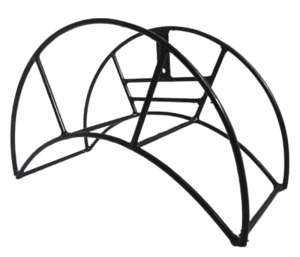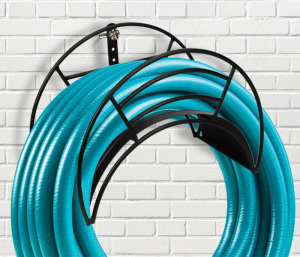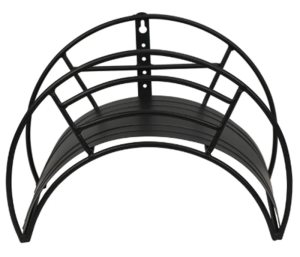One-stop Bending Solutions For Wires, Tubes And Pipes
One-stop Bending Solutions For Wires, Tubes And Pipes
Tube rolling machine is a mechanical device used to process metal pipe (usually steel pipe) into a round or curved shape.
| Structure | Drive device | It consists of motor and reducer to provide power for the equipment. |
| Roller device | Core components, generally composed of multiple rollers, including active and driven rollers, the active roller to drive the steel tube rotation, driven roller to support the role of guidance. | |
| Machine frame | Adopting high-strength steel welding to support and fix the components, which need to have enough strength and rigidity. | |
| Control system | Through the operation panel, controller, sensors, etc. to achieve equipment start, stop, speed adjustment and other control functions. |
Working Principle of Rolling Machine
Place the steel pipe on the roller device. The drive device drives the active rollers to rotate, and the steel pipe is driven to roll by friction. The pressure from the rollers causes the steel pipe to undergo plastic deformation. By adjusting the relevant parameters of the rollers, the processing accuracy can be controlled.
Application Fields of Rolling Machine
It is widely used in the construction industry (such as the processing of grid structures and curtain wall support structures in large – scale buildings), the machinery manufacturing industry (the processing of parts and components of mechanical equipment), the automotive manufacturing industry (the processing of exhaust systems and frame structure components), and the petrochemical industry (the processing of pipeline system components).
Advantages of Rolling Machine
High precision: It can precisely control processing parameters, meeting strict design requirements.
High efficiency: With a high degree of automation, it can process quickly and continuously, reducing costs.
Wide range: It can process steel pipes of various materials and specifications, meeting the diverse needs of different industries.
Stable quality: The force is evenly distributed during the processing, which can avoid common quality problems.
Recently, a hose bracket manufacturer found us, asked us to match a suitable rolling machine, the diameter of the round tube were 30mm, 40mm and 50mm, the thickness of 3mm, according to his needs, I customised a GY80-7NC rounding machine, he watched the video of the machine processing and the technical parameters, said he was very satisfied.
 |
 |
 |
The technical parameters of the customized GY80 – 7NC are as follows:

It is driven by seven rollers, which makes it less prone to slipping and enables the bending of thin – walled materials.
The rollers on both sides are asymmetrically distributed, reducing the straight sections.
Workpieces can be fed from both sides of the side rollers.
It is equipped with a foot switch and an emergency stop button, ensuring convenient operation.
The machine has a balanced transmission.
By simply adjusting the pressing force, circles, arcs or spirals with different curvatures can be obtained.
By changing the mold groove type, various metal profiles can be processed, such as angle steel, flat steel, round pipes and other special – shaped cross – section profiles.
| Main specifications | GY80-7NC |
| Max. pipe bending capacity
(carbon steel) |
80x4mm(round pipe) |
| Max. bending angle | 360° |
| Min. bending radius | R≥8D |
| Rolling speed | 0-150 mm/s |
| Wheel mold speed | 50 r/min |
| Oil pump motor | 7.5kw |
| Max. oil pressure | 15Mpa |
| Machine weight | About 1500kg |
| Machine size | 1800mm x 1400mm x1200mm |
The process of the pipe rolling machine bending hose bracket workpieces is as follows:
1.Pre – operation Preparation
Determine parameters such as the shape and size of the workpiece according to its usage requirements, and select suitable metal pipes. Conduct a comprehensive inspection and debugging of the PLC pipe rolling machine.Set processing parameters like the rotation speed and pressure of the rollers. Ensure accuracy and stability through trial processing.
2.Equipment Operation
Place the pipes on the feeding device, which will transport them to the processing position. The clamping device automatically clamps the pipes and accurately positions them to ensure that the pipes remain stable and do not move during processing.
3.Bending and Shaping
The PLC precisely controls each component of the pipe rolling machine according to the preset program. The active rollers drive the pipes to roll, while the passive rollers provide support and guidance. The pressure from the rollers causes the pipes to undergo plastic deformation.
Keywords: Rolling machine,Tubes and Profile Rolling Machine, pipe bending machine
Our equipment has CE, ISO quality inspection certificate, so the quality is guaranteed to be cost-effective. According to different processing requirements, machines can be customized to fit for your usage, to provide customized services. In the processing period, we strictly control the production process, to ensure the quality of clearance, standardize the process, strict implementation.
